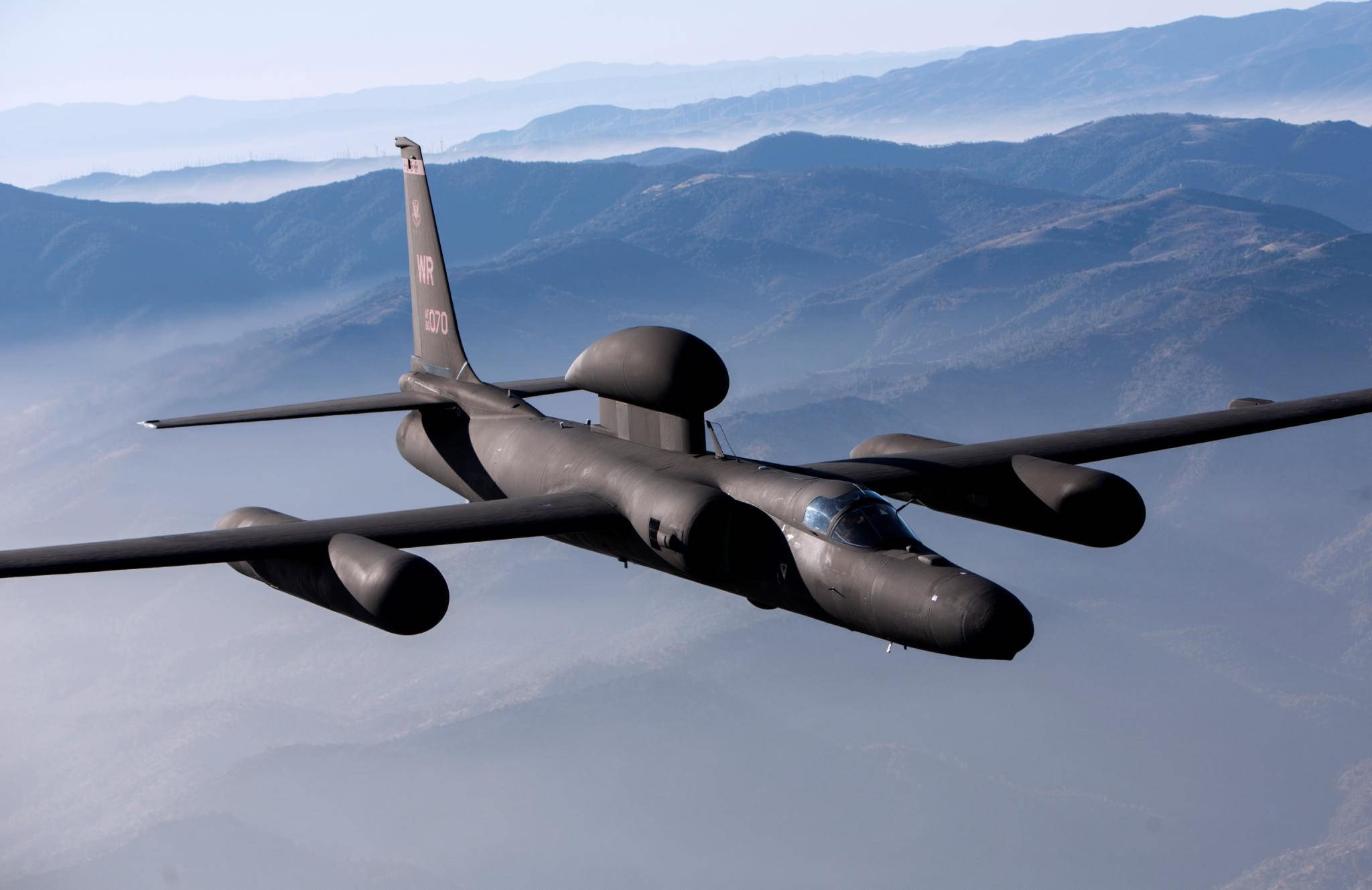Development of the U-2 began in the spring of 1954 to meet a joint CIA/USAF requirement for a high-altitude strategic reconnaissance and special-purpose research aircraft. It took place in the Lockheed 'Skunk Works' at Burbank, California, where - after acceptance of the design in late 1954 - two prototypes were hand-built in great secrecy by a small team of engineers. The aircraft's true purpose was cloaked under the USAF U-for-Utility designation U-2, and the first flight took place on or about 1 August 1955.
At about the same time US President Dwight D. Eisenhower was proposing his 'Open Skies' policy, one of mutual East/West aerial reconnaissance of territories. President Eisenhower hoped that his policy would reduce tension between East and West, thus preventing the growth of the nuclear arms race. Unfortunately the Soviet Union would have nothing to do with this proposal. Consequently 'Kelly' Johnson's new 'spy plane' assumed greater importance. The prototypes were followed by production of about 48 single-seat U-2A and U-2B with differing power plant, and five two-seat U-2D. Some U-2B were converted later to U-2D standard. An additional batch of 12 U-2R was ordered in 1967. A new version, known as the TR-1, is currently in production as a tactical-reconnaissance aircraft, equipped with a variety of electronic sensors.
The requirement for high altitude and long range posed enormous problems: the former needed an aircraft with low wing loading, the latter large quantities of heavy fuel to confer the necessary range. Therefore the U-2 is of very lightweight construction, dispensing with conventional landing gear and pressurisation to save extra weight, and having wings of large area. Landing gear is of bicycle type with single wheels fore and aft, and balanced on the ground by wing-tip 'pogos' - a strut and wheel device which drops away when the U-2 becomes airborne - was selected. The pilot is accommodated on a light-weight seat, dressed in a semi-pressure suit with his head enclosed in an astronaut-type helmet, and forced to breathe pure oxygen for his survival. A medium-powered turbojet is adequate to lift this lightweight aircraft, and long range is possible by shutting it down and gliding for long periods.
In addition to photo and electronic reconnaissance, U-2 were used for weather reconnaissance, high-altitude research, measurement of radiation levels, and for the tracking and recovery of space capsules. They were used for reconnaissance during the Cuban crisis, in Vietnam and during the Arab-Israeli conflict.


0 σχόλια:
Post a Comment